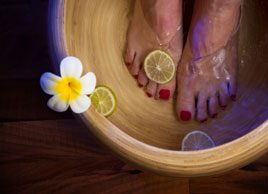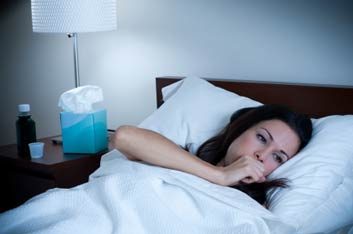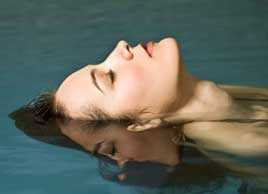
Muscle pain
A 2007 study published in the Journal of Strength and Conditioning Research reported that contrast water therapy-alternating hot and cold-improves recovery from delayed onset muscle soreness, which is pain that occurs after strenuous exercise.
Try this
In the shower, turn the tap to hot (37.5-41°C) for three minutes; turn to cold (10-15°C) for about 30 seconds; repeat two more times, finishing with cold water.

Headache
Headaches are the result of dilated blood vessels in the brain; cold water can help to constrict the vessels and minimize the pain, says Johnathan Werynski, a registered massage therapist and the clinic and outreach coordinator at the Toronto campus of the Canadian College of Massage and Hydrotherapy.
Try this
Some headaches can be relieved by plunging your hands or feet into a basin filled with ice water for 30 seconds to 10 minutes. The action changes the circulatory pressure in the brain.
Or place ice or cold compresses directly on your head. If you have a tension headache with neck and shoulder pain, apply hot, wet towels to the neck and shoulders as well to relieve the pain.

Congestion
Redirecting blood flow away from congested areas (such as the sinuses) can relieve discomfort, says Meghan Bauer, a naturopathic doctor and director of the Isis Naturopathic Clinic in Toronto.
Try this
Wrap yourself in blankets. Place your feet in hot (40°C) water, and apply cold compresses to your head and the back of your neck. After 10 to 30 minutes, remove feet and rinse with cold water. The heat directs blood flow to the feet and “circulates blood from the head and sinuses, easing congestion,” says Bauer.

Arthritis
Aquatic physiotherapy-immersion in water while a physiotherapist directs a patient’s movements or moves the patient’s joints-reduces pain and improves joint mobility in arthritis sufferers, says Mark Mandelstam, an israel-trained physiotherapist at the Kitsilano Physiotherapy Clinic in Vancouver, who is certified in hydrotherapy and aquatic rehabilitation.
Try this
Since cold temperatures can reduce pain and inflammation in a joint, Werynski recommends submerging the affected area in ice water or applying ice wrapped in a towel.

Sleep issues
A soothing bath is a tactic for many who struggle getting to sleep, and studies have proven its efficacy. One, published in 2002 in the International Journal of Nursing Studies, reported that a warm bath improved sleep quality among elderly patients, and helped those with insomnia get to sleep faster.
Try this
Run a warm bath (36-38.5°C) and, while soaking, place a cool cloth on your forehead or the back of your neck: You are warming up your body, but the coolness on your head prevents you from feeling too lethargic-you want to be relaxed but not exhausted, says Werynski.
Related:
• The fitness benefits of swimming
• 5 ways swimming will tone your body
• Natural home remedies: Arthritis
